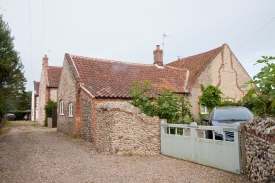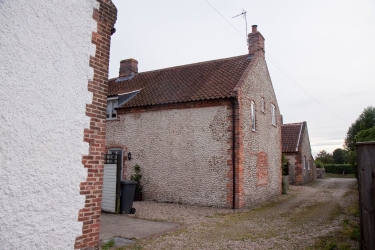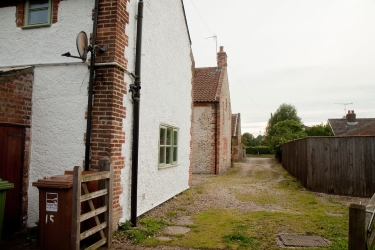Just Holt Articles
This is a small series of articles by Steve Benson (chairman of the society) for Just Holt magazine.
The Holt Workhouse
Leaving the town and travelling eastwards along the Cromer Road you will come to a right fork near Gresham's Prep School. This is Pearsons Road and a little way along you will come to a long e-shaped building with the brick outline of a huge chimney on its gable end facing the road. Now it forms a row of cottages but, when it was built in 1779, it was Holt's Workhouse.
Since before the Norman Conquest it had been seen as the Christian duty of each parish to look after those who needed support to survive. For centuries the Church organised the provision of food, clothing and shelter for these unfortunates, assisted by the payment of tithes. After the dissolution of the monasteries by Henry VIII in the 1530s, the burden fell increasingly on the lay community. In the time of Elizabeth I a series of Poor Laws were passed to regularise matters and to build local workhouses to care for the old, the infirm, the mentally handicapped, the orphans, and the destitute, either as residents or as centres from which to distribute food or money to those who had their own shelter but no means of support.

In the Holt Parish records for 1599, there is a note in the margin:
"for this yeare was the houfe for the poore builded by the Towne."
Sadly we have no idea where this was.
But clearly by the 1770s it was no longer sufficient for the needs of the community. We have a document describing the inventory of the late Edward
Jewell of Holt:
"Jan 1st 1779. A Deed of that date between the principal Occupiers of land in the parish of Holt relating to building a Workhouse or House of Industry in and for the parish of Holt."
The cost of the Poor Rate countrywide, especially with the coming of the industrial age and the growth of towns and cities, became ever higher and more unpopular with ratepayers so new laws were designed to tighten up the system. One change was the grouping of small village workhouses into Unions. Holt and many surrounding parishes were united under the Erpingham Union with a new and vast workhouse constructed at West Beckham with accommodation for 600 paupers separated into sections for men, women and children. A bleak regime was devised to keep the residents employed and regimented. The overall purpose was to save costs and reduce the number requiring help from the Poor Rates. Such was the privation and the stigma now attached to entering the workhouse that it became the last resort of the desperate.
Gradually improvements in conditions and inspection brought an end to the worst excesses and exploitation but the system rumbled on even after the introduction of Old Age pensions after World War I and only ended with the introduction of the Welfare State in 1948.
So that harmless relic of a bygone age in Pearsons Road reminds us that we have plenty to be thankful for even though there are too many in this county and country today who are socially and financially hard-pressed.



